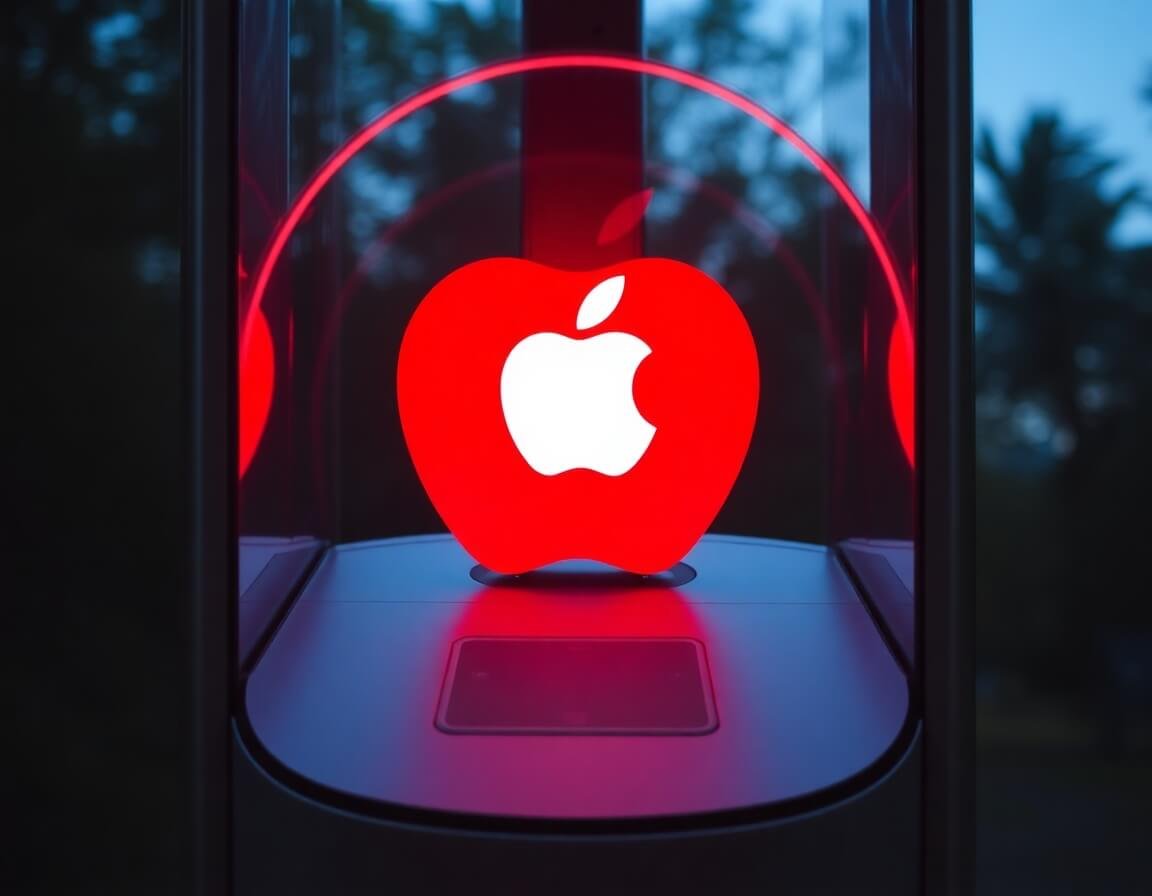In recent years, the technological landscape has been evolving at an unprecedented rate, with companies like Apple leading the charge in innovation. One of the most exciting yet speculative areas of innovation is the concept of “Apple Teleport.” While not officially recognized in the tech world, this term has gained significant traction among enthusiasts and futurists who envision Apple playing a pivotal role in revolutionizing connectivity, virtual experiences, and even the very fabric of our digital lives.
What is “Apple Teleport”?
While the term “Apple Teleport” isn’t an official product or service from Apple, it draws from concepts tied to Apple’s existing technologies, as well as futuristic ideas around spatial computing, augmented reality (AR), virtual reality (VR), and even quantum communication. Essentially, “Apple Teleport” might be a catch-all phrase for an advanced Apple-driven platform or technology that could allow users to “teleport” or transfer information, experiences, or even themselves across vast distances — not necessarily in a literal sense, but through advanced digital technologies.
Apple has a long history of transforming the way people interact with technology, whether it be through the iPhone, the Apple Watch, or the introduction of the Apple Vision Pro. A future innovation like “Apple Teleport” could be the next natural step, blending several cutting-edge fields into a new user experience.
The Role of Augmented Reality and Virtual Reality
One of the most plausible routes for “Apple Teleport” to become a reality involves Apple’s investments in augmented reality (AR) and virtual reality (VR). In 2023, Apple launched the Apple Vision Pro, a mixed-reality headset combining AR and VR to offer a fully immersive experience. With such technology already on the horizon, the idea of “teleportation” might manifest as the ability to move seamlessly between virtual environments, with users feeling as though they are physically present in a distant location.
Here’s a breakdown of how AR and VR technologies could make “Apple Teleport” a reality:
- Virtual Presence in Different Locations
Users could theoretically “teleport” into any environment of their choice using a device like the Apple Vision Pro. Imagine attending a business meeting in New York City from your home in California or exploring the Louvre Museum in Paris without ever leaving your couch. The device would scan your physical surroundings and use spatial computing to create a virtual “copy” of you, then place it in a different location. With real-time communication, it would feel like you’ve physically moved to another place — without needing transportation.
- Enhanced Remote Work and Social Interaction
“Apple Teleport” could dramatically enhance remote work and virtual collaboration. If people could immerse themselves in a virtual meeting or workplace, the boundaries between office and home would blur. You could interact with colleagues or clients in a shared virtual space, making meetings more engaging and productive. Video calls feel less like two-dimensional interactions and more like actual face-to-face meetings.
In the social realm, Apple’s ecosystem might allow for seamless integration of your digital self into the lives of friends and family. Imagine attending a birthday party virtually, where you feel you are physically present, even though you’re miles away. The potential for social interaction could be transformative, especially for people with physical limitations or those separated by long distances.
- Digital Avatars and AI Integration
To enhance the realism of virtual teleportation, Apple could leverage artificial intelligence (AI) and machine learning to create lifelike avatars of users. These avatars could precisely replicate gestures, expressions, and voices, offering a more human-like interaction than current video or voice communication technologies. AI could also extend to virtual assistants or digital companions, improving the user experience.
Apple’s Innovations in Spatial Computing
Spatial computing is another core area where the “Apple Teleport” concept could gain traction. Spatial computing is the interaction between humans and digital environments through 3D modelling, tracking, and sensors. Apple’s development of the Apple Vision Pro and ARKit framework points to a future where users can manipulate and interact with digital objects in a three-dimensional space.
- Environmental Mapping and Real-Time Navigation
Using devices like the iPhone and Apple Vision Pro, Apple could create a platform where users “teleport” between real-world environments through detailed digital maps. For example, you could navigate complex environments or buildings from your home or office using detailed 3D models generated in real time. This could be particularly useful for applications in architecture, urban planning, and tourism, where users could explore structures or locations before they physically visit them.
- Telepresence in Physical Locations
In a more advanced version of “Apple Teleport,” users could engage in “telepresence” experiences in physical locations. For instance, Apple could leverage AR to superimpose virtual objects over real-world settings. Through Apple’s ARKit, it’s possible to create digital models that appear to exist in the same space as physical objects. This could allow users to interact with physical environments from afar, such as adjusting the furniture layout or interacting with an object in a distant location by manipulating it through an augmented layer.
The Role of 5G and Beyond in Teleportation
Another critical element that could make “Apple Teleport” a reality is the advancement of high-speed internet connectivity, particularly 5G and future 6G networks. The low latency and ultra-fast speeds of 5G networks already enable real-time streaming of high-quality video and immersive AR/VR experiences. Apple, with its push into 5G-enabled devices, stands poised to take full advantage of these advancements.
- Seamless Data Transmission
For “Apple Teleport” to function smoothly, near-instantaneous data transmission between devices and remote environments will be required. With 5G technology, this could become a reality, enabling users to transmit large amounts of data — including high-resolution 3D visuals and real-time interaction — with minimal delay. This technology will make virtual environments and telepresence seamless and responsive without the lag that sometimes hampers current VR/AR experiences.
- Cloud Computing and Edge Computing
Alongside 5G, cloud and edge computing development will be crucial in enabling Apple Teleport. Cloud computing would allow users to access powerful computing resources remotely, while edge computing—where data is processed closer to the user’s location—would help reduce latency. This combination of technologies would allow Apple’s devices to render complex virtual environments in real-time, making remote teleportation possible without requiring massive local hardware.
The Implications for Travel and Logistics
One of the most profound effects of “Apple Teleport” could be seen in the travel and logistics sectors. If users could teleport into different locations virtually, the need for physical travel could decrease significantly. This would have a massive environmental impact, as reduced air travel and transportation could lower carbon emissions and ease congestion in major cities.
- Redefining Travel
While physical travel would likely never be replaced entirely, the ability to “teleport” virtually would change how we think about vacations, business trips, and social gatherings. Remote collaboration could become as effective as in-person meetings, eliminating the need for frequent travel. For individuals, the ability to visit distant locations or attend events without leaving home could revolutionize how we experience the world.
- Changes in Real Estate and Urban Planning
With virtual “teleportation,” the demand for physical office space might diminish. Instead of commuting to an office every day, employees could “teleport” into a virtual meeting room. Similarly, the role of physical retail spaces might evolve, with stores offering virtual shopping experiences that allow customers to browse products in an immersive 3D environment.
The Privacy and Ethical Considerations of Apple Teleport
As with any significant technological advancement, the “Apple Teleport” concept would raise a host of privacy, security, and ethical concerns. The ability to digitally replicate a person’s presence in a remote location would require robust privacy protections. Apple must implement advanced encryption techniques to protect personal data and prevent unauthorized access to users’ virtual identities.
Additionally, questions about digital addiction and the psychological effects of prolonged immersion in virtual environments would need to be addressed. The potential for isolation and detachment from the real world might become a concern if “teleportation” experiences were to replace face-to-face social interactions.
The Future of “Apple Teleport”
While it may still be years before we see a fully realized version of “Apple Teleport,” the technologies underpinning such a platform are already in development. With its focus on augmented reality, spatial computing, and immersive virtual experiences, Apple is positioning itself at the forefront of this next wave of technological evolution.
In the coming decade, as devices like the Apple Vision Pro become more widespread, the idea of virtual teleportation could transition from science fiction to reality. Whether for work, leisure, or social interaction, the potential applications for “Apple Teleport” are virtually limitless. The real question is not whether it will happen but when and how we’ll adapt to this transformative shift in how we experience the world.
Conclusion
“Apple Teleport” may not yet exist as an official product, but the idea encapsulates what many tech enthusiasts envision for the future. With the convergence of AR, VR, spatial computing, and cutting-edge connectivity, Apple could lead the charge in redefining how we connect, work, and explore the world around us. Whether we’re attending a virtual concert, exploring distant planets, or interacting with friends in entirely new ways, the promise of “Apple Teleport” is an exciting glimpse into a more connected, immersive future.
you may also read:Google Messages Keeps Crashing: How to Fix the Problem and Troubleshoot Effectively

